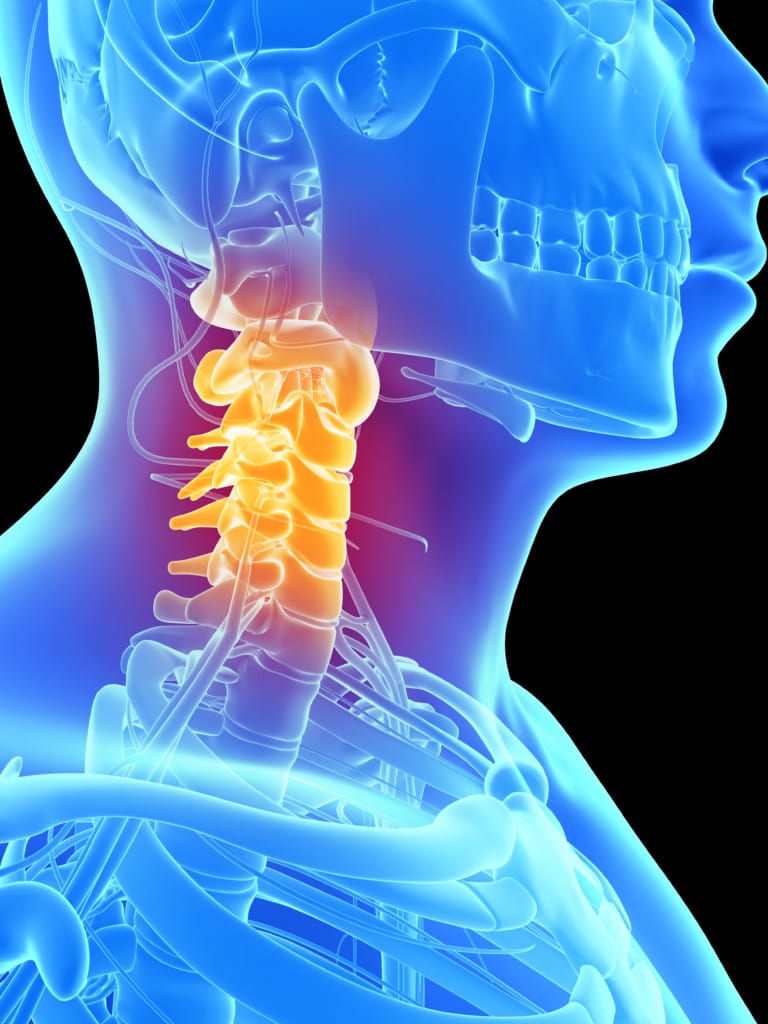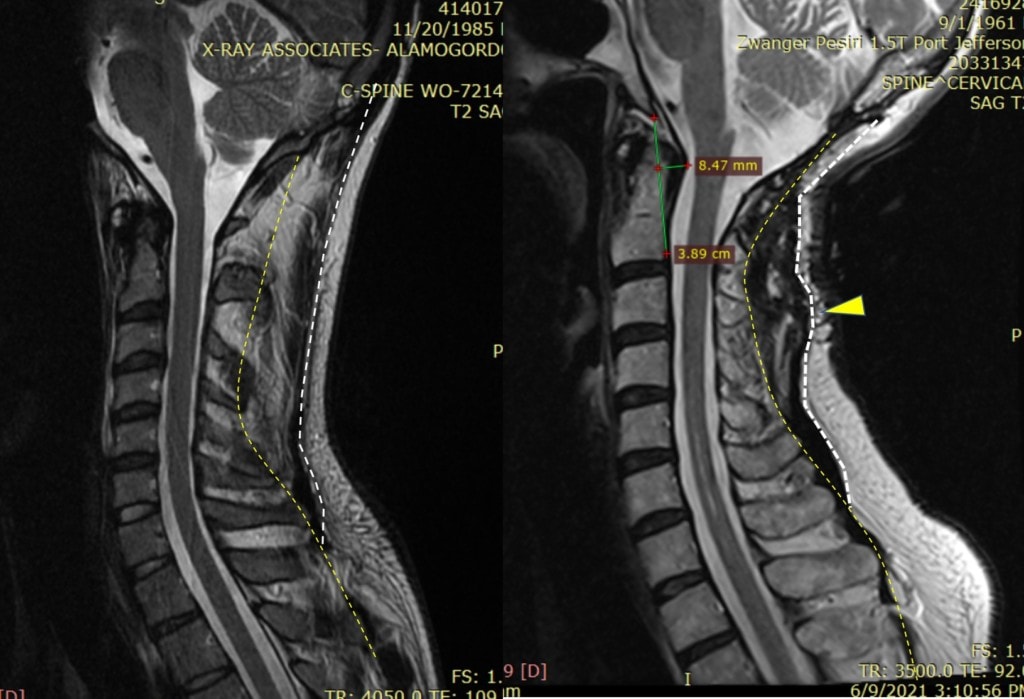Surgically Damaging the Neck

Credit: Shutterstock
Surgery is damage to accomplish a goal. I say that to patients all the time, but it always helps to have a visual. This morning we’ll go over a patient who had multiple neck surgeries that left her with clear and visible damage on her neck MRI. Let’s dig in.
Damage to Accomplish a Goal
I use this phrase all of the time with patients. There is no way to cut into the body and not damage stuff. Your hope with orthopedic surgery is as follows:
- There is no other non-surgical way to treat the problem
- You minimize the damage
- The damage is less of a big deal compared to what you fix
However, in my experience. surgeons rarely have this conversation with patients. So today we’re going to review the case of a woman who learned this lesson too late.
Cervical Surgeries
Our patient today began with a diagnosis of Chiari malformation. Check out the link here to learn more, but this is a condition where the brain is hanging too low in the skull and that pressure is causing symptoms. The surgery called ‘decompression” carves a hole in the back of the skull. She didn’t really have classical Chiari where surgery is required to save someone’s life, but the theory was that decompressing this area might help her pain and other symptoms. It didn’t help this patient and if anything she got worse. So she began a series of surgeries that culminated in both the cutting of the occipital nerves and the placement of a mesh where the hole in the skull was cut. However, a quick look at her MRI let me know that there was serious damage caused by the surgeries.
Reviewing a Neck MRI for Surgical Damage

The images above have yellow and white dashed vertical lines. The yellow line is where the posterior ligaments at the back of the spinous processes live (supraspinous/interspinous). The white dashed line represents where the fascia surrounding the muscles lives.
What’s the fascia? This is the tough outer covering of the muscles that help them function normally. The yellow arrow on the image to the right above points to the area where the fascia has been damaged by these surgeries. It’s now “blown out” which is why that white dashed line jogs to the right and back. Basically, this is the damage to this area caused by these surgeries.
In fact, this is only a part of this patient’s problem. All of those upper cervical surgeries also killed off her upper neck muscles. There is nothing left up there other than masses of scar tissue.
Can We Help?
While we can help many patients who have had procedures like cervical fusion, this one is unique. The back of the skull where key muscles attach was removed. Many of those same muscles that stabilize the head on the neck have been replaced by scar tissue. So while I’m trying some things, it’s unknown if I can help.
The upshot? All surgery is damage to accomplish a goal. Multiple surgeries mean more damage. I hope this woman’s case illustrates that all we need to try less invasive things before surgery and if surgery is considered, realize that it’s always a two edged sword!

NOTE: This blog post provides general information to help the reader better understand regenerative medicine, musculoskeletal health, and related subjects. All content provided in this blog, website, or any linked materials, including text, graphics, images, patient profiles, outcomes, and information, are not intended and should not be considered or used as a substitute for medical advice, diagnosis, or treatment. Please always consult with a professional and certified healthcare provider to discuss if a treatment is right for you.
